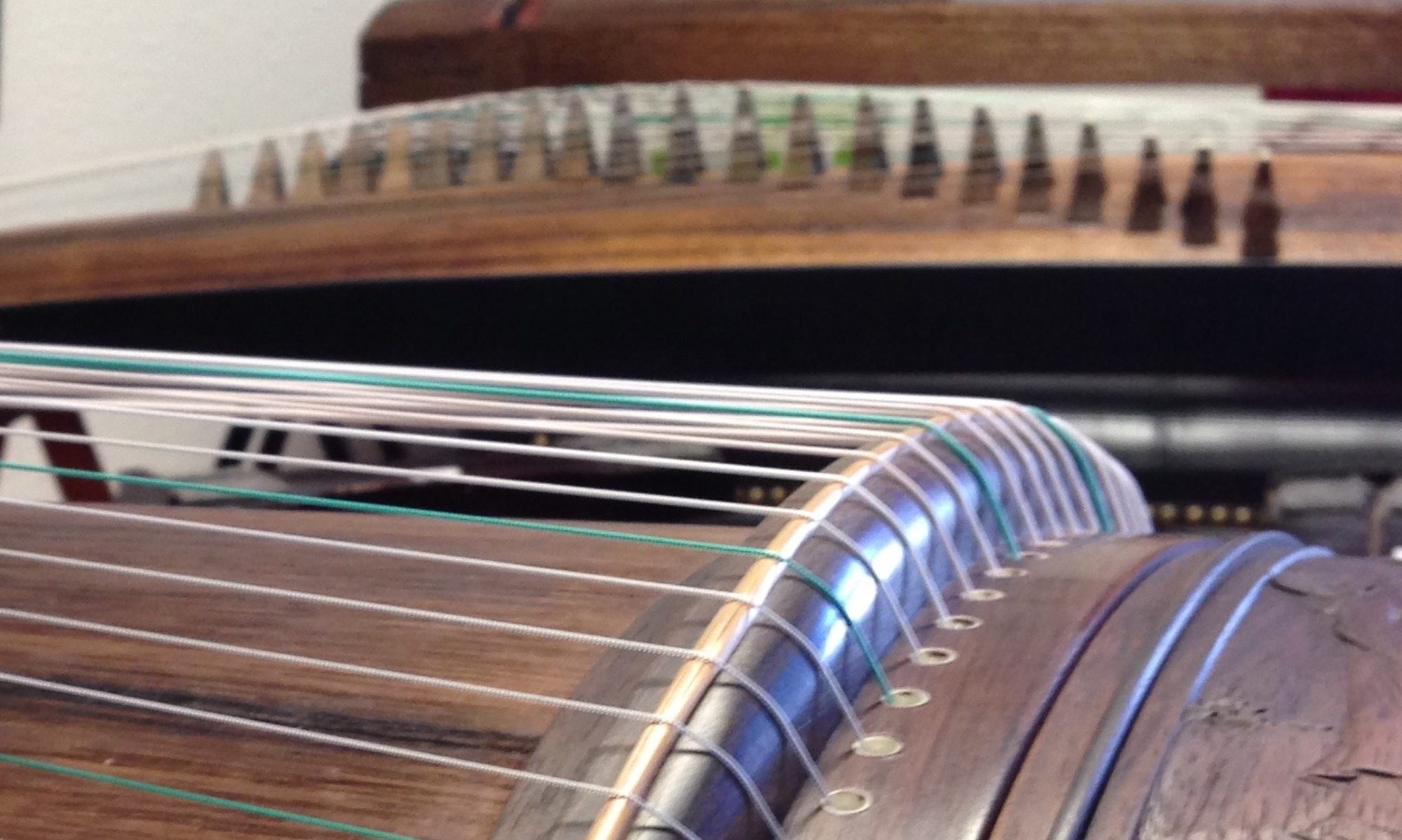What is a Guzheng?
The Guzheng, a 21 -stringed traditional Chinese musical instrument belongs to the asian long zither family. It is a plucked-string instrument with a vast history dating back over 2,500 years. The Guzheng features a rectangular-shaped soundbox with strings stretched over movable bridges. Here are its main parts:

Lets learn the parts of The Guzheng
- Head- This area contains the compartment where the tuning pegs are.
- Tail- This is the portion is the furthest away from the performer and is the main focal point for decorative elements, which typically match the decor of the head. The tail is where the strings come through the bottom of the body
- Soundbox:
 The body of the Guzheng is generally made of wood. For the most part Paulownia wood is the traditional choice. The soundbox amplifies the vibrations of the strings, producing sound.
The body of the Guzheng is generally made of wood. For the most part Paulownia wood is the traditional choice. The soundbox amplifies the vibrations of the strings, producing sound. - Soundboard: The top board of the soundbox
- Backboard: The bottom board of the soundbox
- Bridges: The Guzheng has movable bridges chiefly made of wood, but sometimes other materials. These bridges support the strings and help to determine the pitch of each note. By adjusting the position of the bridges, the player can fine tune the instrument
- Yue Mountain and S bridge: These are the starting and ending points for the strings. The Yue Mountain is the right long bridge. The S bridge is generally an ‘S’ shape. However on certain models, the bridge is straight.
- Strings: The Guzheng has 21 strings, although modern versions may have more. The strings have a steel core with a nylon wrapping.
- Tuning Pegs:
 The tuning pegs are located at one end of the Guzheng generally inside a little box at the head. They are used to adjust the tension of the strings, therefore controlling the pitch of each note. Our tuning blog post – https://www.theguzhengshop.com/uncategorized/blog/how-to-tune-a-guzheng-a-step-by-step-guide/
The tuning pegs are located at one end of the Guzheng generally inside a little box at the head. They are used to adjust the tension of the strings, therefore controlling the pitch of each note. Our tuning blog post – https://www.theguzhengshop.com/uncategorized/blog/how-to-tune-a-guzheng-a-step-by-step-guide/ - Decorative Elements: Many Guzhengs are works of art adorned with Intricate designs-
 Carvings
Carvings Paintings
Paintings and many more varieties on the head and tail and sometimes on the bridges as well. Some brands have adornments specifically developed by them not found in competitors.
and many more varieties on the head and tail and sometimes on the bridges as well. Some brands have adornments specifically developed by them not found in competitors.
Excerpt from Bei Bei’s Guzheng Tutorial –

